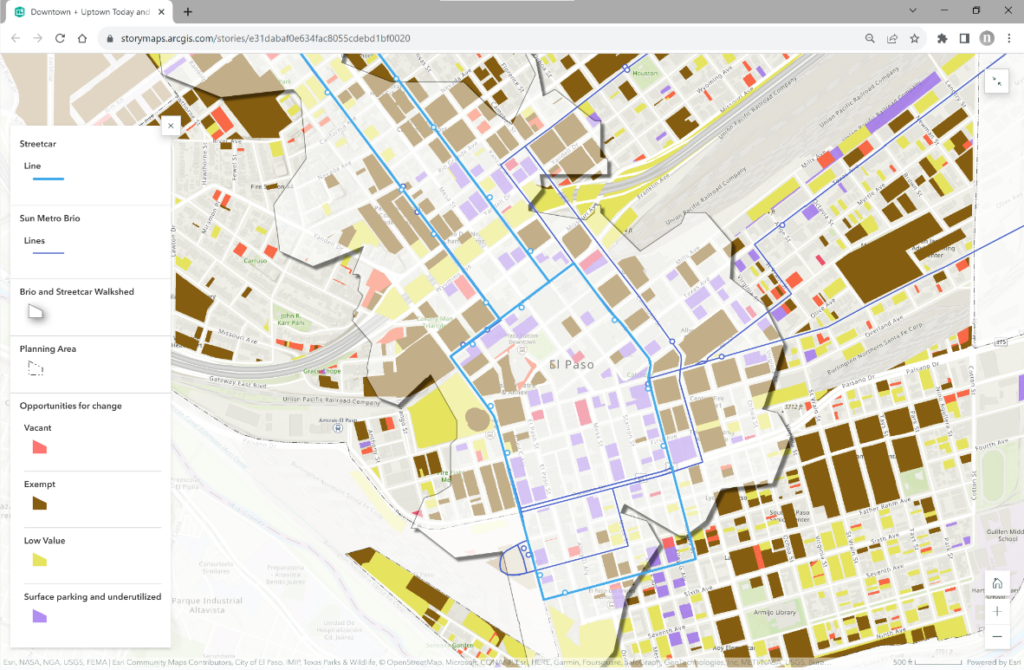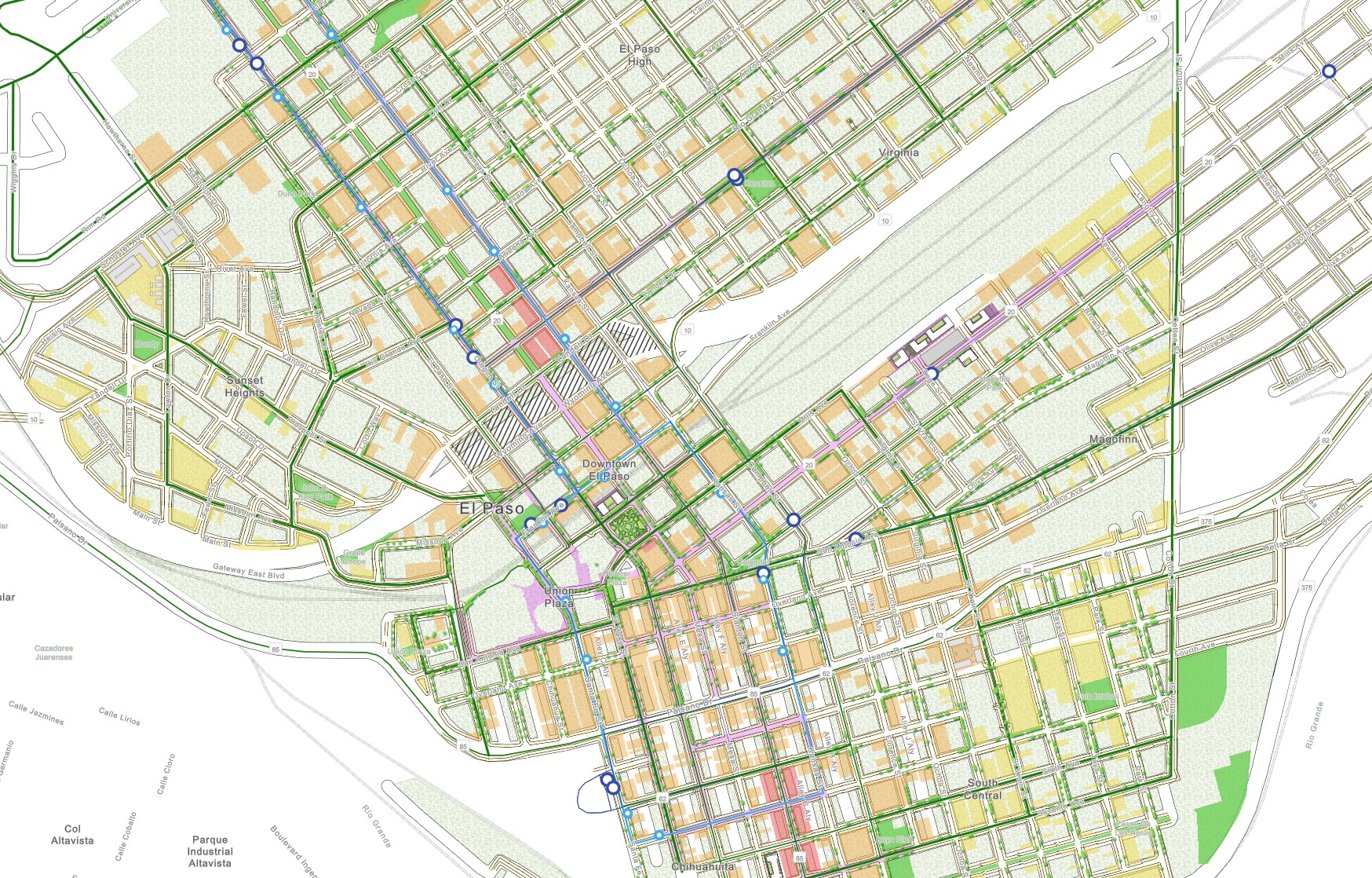| Client | City of El Paso, Texas |
| Services | Consulting |
| Timeline | 2023 |
| Deliverable | Master Plan |
The Downtown, Uptown and Surrounding Neighborhoods Master Plan was created with significant input from the residents, neighborhood associations, core stakeholders, and City staff. The City of El Paso Capital Improvement Department (CID) worked with Nels Nelson to explore potential opportunities and constraints with infusing new housing and supportive uses into the 3 square mile area and better connect existing neighborhoods with the heart of the city. The objective of this plan is to improve livability, equity, economic prosperity, housing for all ages and incomes, expanded public amenities, and improve pedestrian connectivity to existing neighborhoods.

Since the Plan’s adoption, the City has reported that it has been a great success. The Plan set the stage for zoning reform and unlocked $17 million in grant funding.
The Plan was delivered as a PDF and as a Storymap with interactive maps. Access the Plan on Elevate El Paso.



“To identify where do we need to make improvements in infrastructure… It means things like roads, sidewalks, streets, trees, lighting, bike lanes… And so we need to do a needs assessment and that’s what this plan did. Second is that we really need to be focusing on how do we make it easier for people to redevelop or to invest in their properties.”
Alex Hoffman, City of El Paso, Texas

Interactive map of land available for mixed-income housing redevelopment. View the entire report on the City’s website.
Creating the actionable plan is a highly collaborative process. It began with online surveys, data gathering, and analysis of demographics in the defined project area. We also gained significant input from the community through several public and stakeholder meetings. This process is revealing the wants and needs of stakeholders and avoiding the “top-down” way of previous, abortive, revitalization proposals. Our team is developing goals that include attracting employment, promoting equity and inclusivity, encouraging adaptive reuse of existing structures, diversifying housing, promoting commercial vibrancy, expanding mobility, enhancing walkability, and providing dynamic public spaces.
